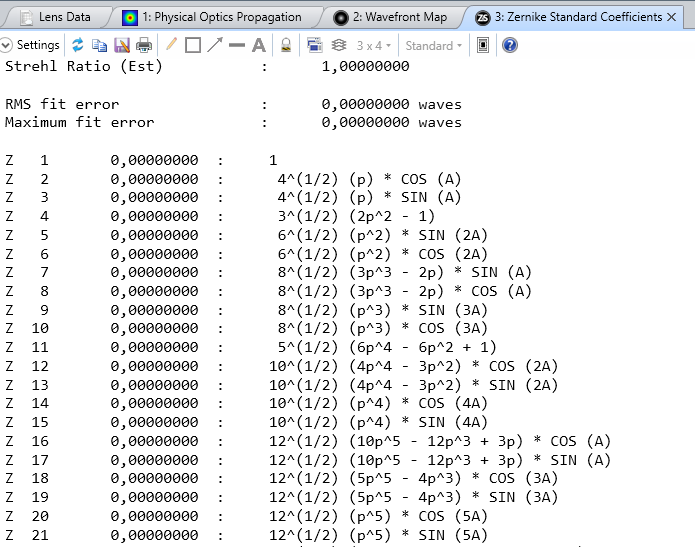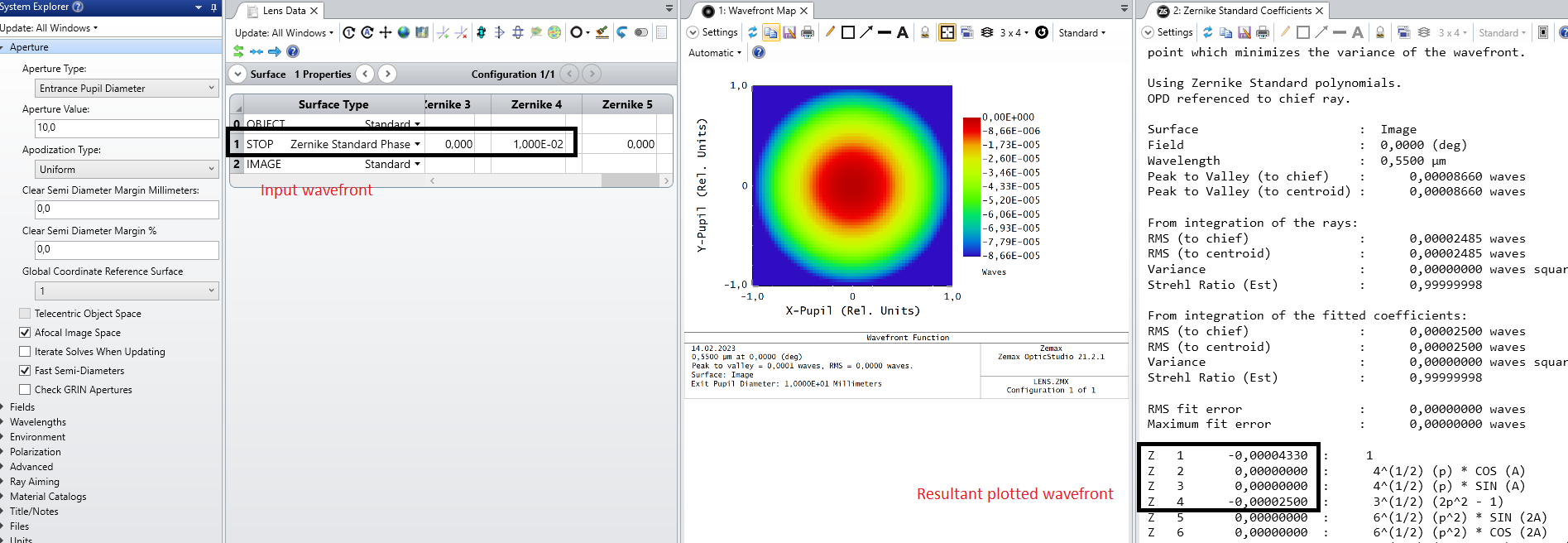Hi Baraka,
There are several surfaces in OpticStudio which have a Norm Radius column; this is a scale factor for coefficients which make optimization and athermalization faster/more stable. The default Norm Radius for all surfaces is always 100, but this should be changed to either the Clear Semi-Diameter (coefficients scaled to edge of surface; useful for stable coefficients when athermalizing) or 1 (scaling is turned off, coefficients are lens units, and can be useful when comparing something like Extended Asphere to Even Asphere). For Zernike (orthonomal) surfaces, the Norm Radius should always be set to the Clear Semi-Diameter.
Changing this value to 5 to match your EPD, you get the Z4 term of 0.00999525, which with a recursive fitting algorithm is within the expected error range of 1E-2.







